What’s Going On?
On 24th May I find that our big strong colony has decided to make queen cells in preparation for swarming. They have planned on the old queen leaving with around 10% of the colony to set up home somewhere else. I decide to take the old queen out and place her in a nucleus (small hive) box with 4 frames of brood, bees and food stores and I take them to another apiary over 3 miles away for a couple of weeks. This is so that the flying bees don’t come home to the original hive and deplete this small colony. The usual procedure is to leave one queen cell in the original colony and knock down all the rest. A drawing pin is placed in the frame above that chosen cell. A week later the beekeeper would go in and knock down any additional queen cells made over the past week, leaving the chosen cell intact. After this time, there are no more eggs or unsealed larvae for the bees to make new queens from.
Curiosity
The weather has been cold and wet for a couple of weeks and I wonder if perhaps the bees might change their minds about swarming. I’ve taken away half their brood leaving them only 4 frames of brood. I’ve not knocked down any of their queen cells because I want to know what they will do if left to their own devices this time. Normally I would knock down queen cells as above.
Primary Swarm With Virgin Queen
The answer comes on my way home from teaching beekeeping near Dumfries, around 5 hours drive away. I’m coming up over the Slochd Summit in Highland region when a call comes through from husband and bee-minder, Linton. He tells me about a collection of bees on a shrub in the apiary. Initially I think, great, the queen has been on a mating flight and some of the bees have collected on the shrub planning to go home again later. Linton, however, is not a bee-listener’s husband for nothing and notices that some of the bees are waggle dancing on the swarm. Yikes! these bees are definitely a swarm debating the new home.
Swarm Caught and Hived
I arrive home an hour or so later to find the swarm hived in nucleus box, our house vacuumed, and tea on the table! I’m thrilled to bits, but first I check the hives and put my ear to them all. In the strongest colony, I hear the piping sound of a newly emerged queen and the answering quacking from several queens held prisoner within their cells by worker bees. This is a strategy to prevent all the virgin queens emerging at once and killing each other. For, if the colony decides to send out after-swarms they need virgins to go with them. The workers add more wax to the ends of the queen cells thus preventing the virgin queens from opening the cells and emerging. If they are not going to send out an after-swarm then all the virgins can emerge and fight it out among themselves, with the surviving queen assuming role of new queen. The workers may also tear down unwanted queen cells exposing the virgins which are stung by the first queen out. Worker bees don’t usually kill queens but they might suffocate dying queens by balling them in a mass of bees.
What Next?
My bee-buddy Cynthia wants another colony so I call her next day and invite her over to make up a mating apidea (small mating nucleus box requiring only 300 bees and a virgin queen or ripe queen cell) and rescue some virgin queens. I remove all the queen cells because I know that there is already a virgin queen in the hive. I let a couple out of their cells to run onto the frames because Ted Hooper says in his book Guide to Bees & Honey that a colony will not send after-swarms in this situation. These measures are preventing an after-swarm. The deal is, Cynthia brings the fondant to feed the bees in the mating nuc. I go to get the kit expecting that I will need to melt bees wax and secure strips of unwired foundation in the apidea etc, but the small nucs are all ready for use. I remember now that my bee-friend, Stewart Smith, borrowed them last year but I never noticed that he returned them in such good condition till this morning. A smile lights up my face and I make a mental note to thank Stewart.

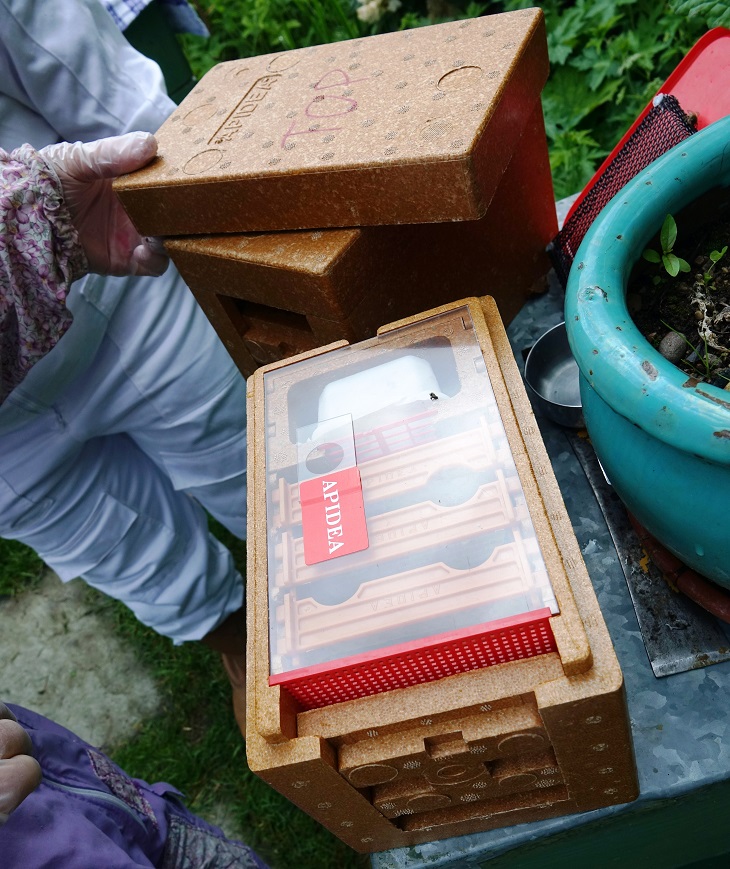
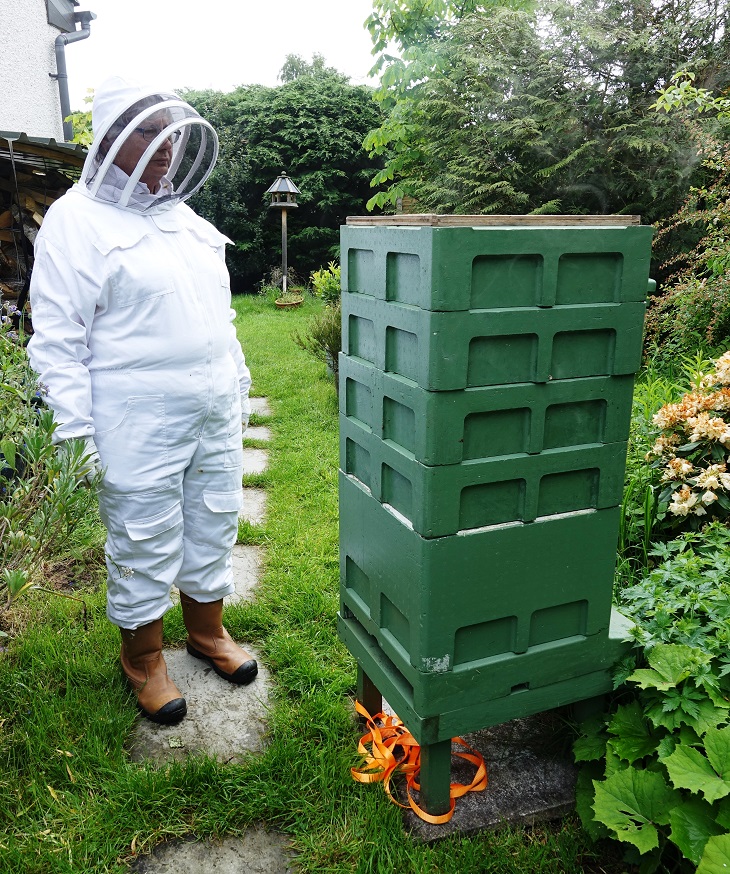

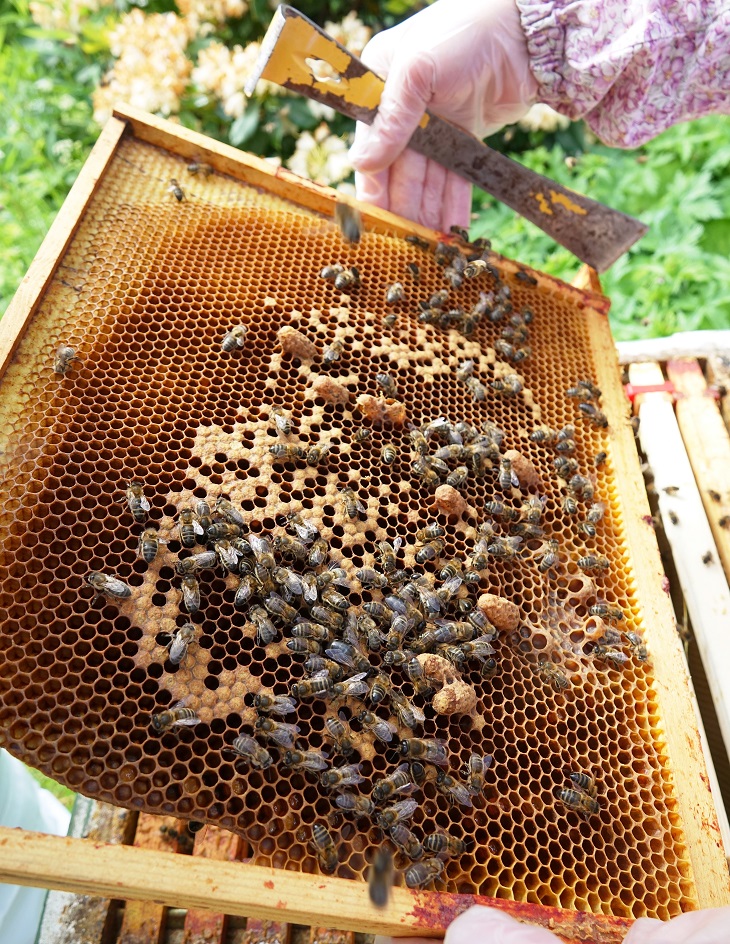
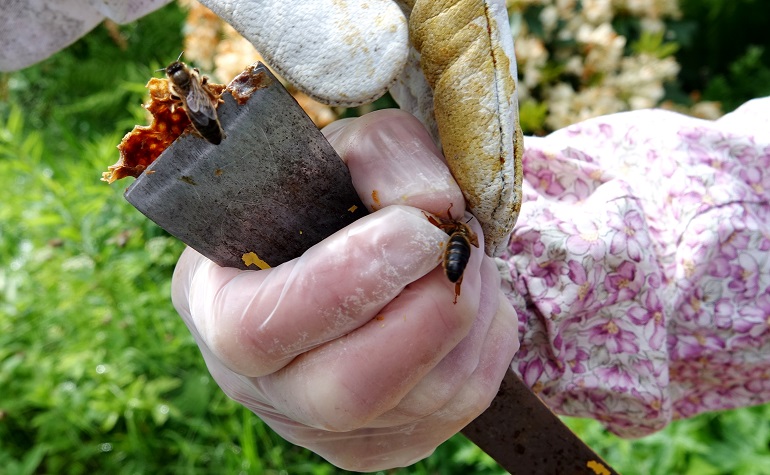
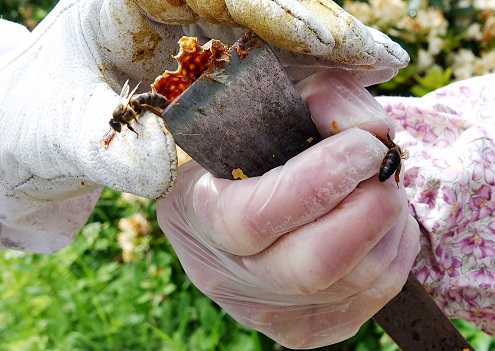



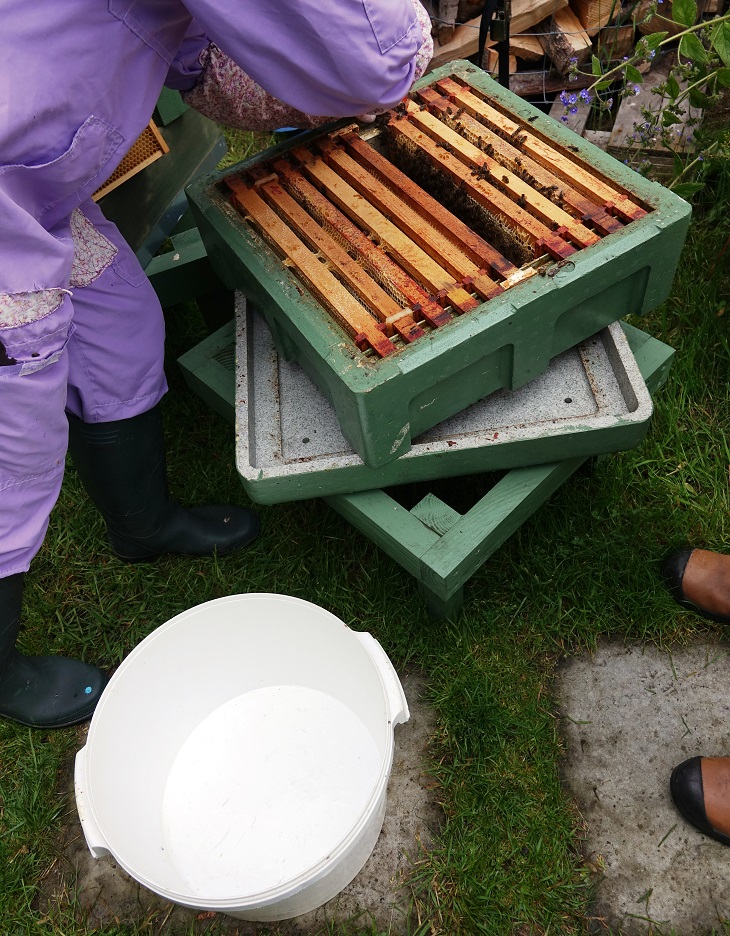




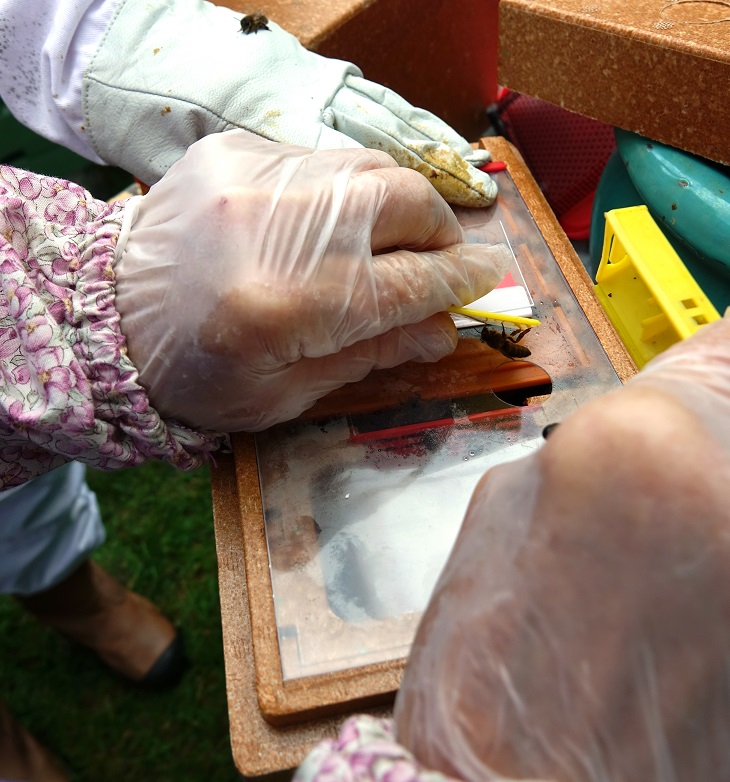
Job done! -and now?
We place the mating nucs (with closed entrances) in cool dark sheds for three days to allow the bees to settle and make wax to draw out the foundation. They have ventilation and I spray with water every day, a small amount. It is cosy in these tiny nucs and the fondant will provide the energy needed to stimulate wax glands. In a few days the queen will be ready to fly and take mating flights. She may take several flights and will mate with several drones (7-20). Current research suggests a higher number and there are records of 77 drones mating with a single queen. Small wonder she doesn’t fly again unless it is to swarm in a year or so!

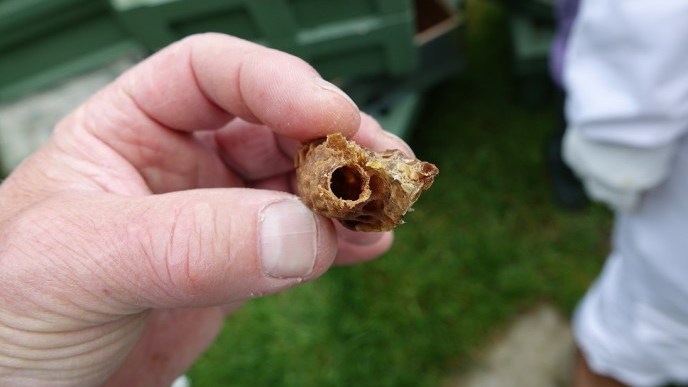
This is brilliant!! Its so interesting, Ann- I’ve learned heaps !!
Thanks,Jane. Wish that you could have joined us on the day.
There is an amazing amount of interesting information in this episode of bee keeping. I had no idea! I simply had not.
Thank you Ann for such an intriguing insight into the life of bees. I thought it was hard enough finding yourself born into the world as a human but how lucky we are. The bees are very clever but their lives give them such very limited choices of free will as compared with us bi-peds. Most humans have no idea really, how amazing it is, that we can choose to look at the life of another species; that we can choose to study and foster that species; that the lives of that species are completely interwoven with the entire life of our planet. A final sobering thought is that if bees vanish, it won’t be just honey that we will miss. It will affect the many other linked eco-systems that share our beautiful blue and green dynamic world.
Thank you for this insightful and arresting comment, Catriona. Put like that, it makes our beekeeper roles even more crucial to the future of the planet.
Wonderful stuff. There are so many little practical things in here that don’t appear in any of the books – or not the ones I’ve read. Great examples of thinking on your feet and going with the bees, guided by the particular circumstances at the time and a confident knowledge of what the bees ‘want’ to do. Thank you.
Thanks, Avery. I wrote that one for you actually. You have been so helpful with past suggestions that I have decided to try and give some guidance on how to do things, along with an explanation that a non-beekeeper can (hopefully) enjoy.
Well done Ann you are so good at this. The bees are very lucky to have someone like you and all the other people you have influenced. Also good on Linton for noticing! Ellie wanted to come and see you and Linton at the weekend as she wanted to see the bees! You have a very down to earth and fun way of telling your stories , explaining about how the bees function in a way that makes it easy to understand. Thank you , they are truly facinating creatures. As Einstein said “ if the bees disappeared off the surface of the globe then man would have only four years of life left”. We need to get people to stop using pesticides and only grow bee friendly flowers and trees.
Thanks, Susan. You may be interested to learn that Einstein didn't actually say that but it sounds effectively dramatic. I was told by a scientist that a Scotsman said that. However, one of the world's greatest scientists of our time (Edward. O. Wilson) indicated in "The Diversity of Life" that if all the insects were to die there would only be a short time left for humankind, and most other life forms on our planet. I have written an article for Smallholder magazine, coming out in August, on the role of insects.